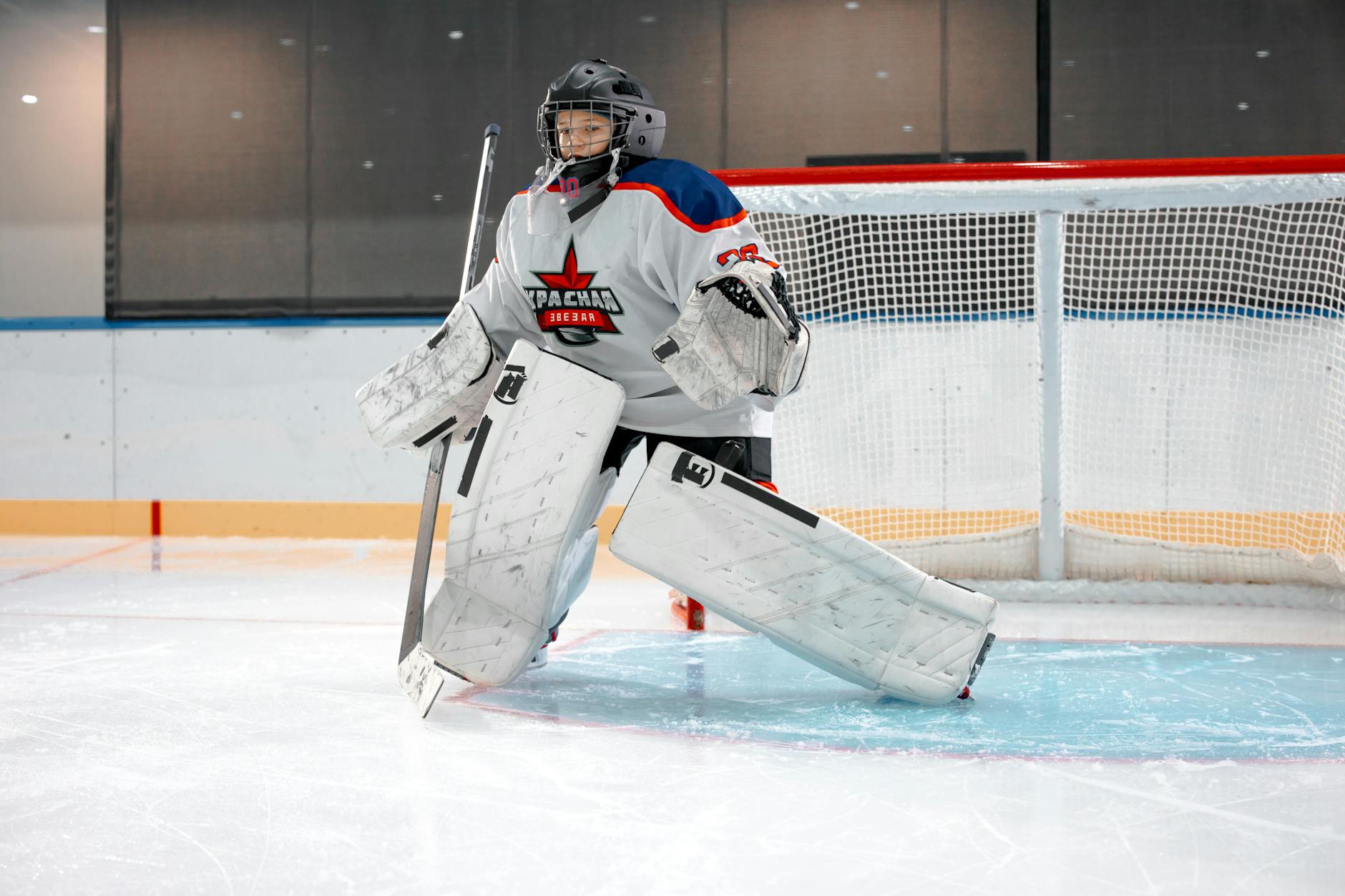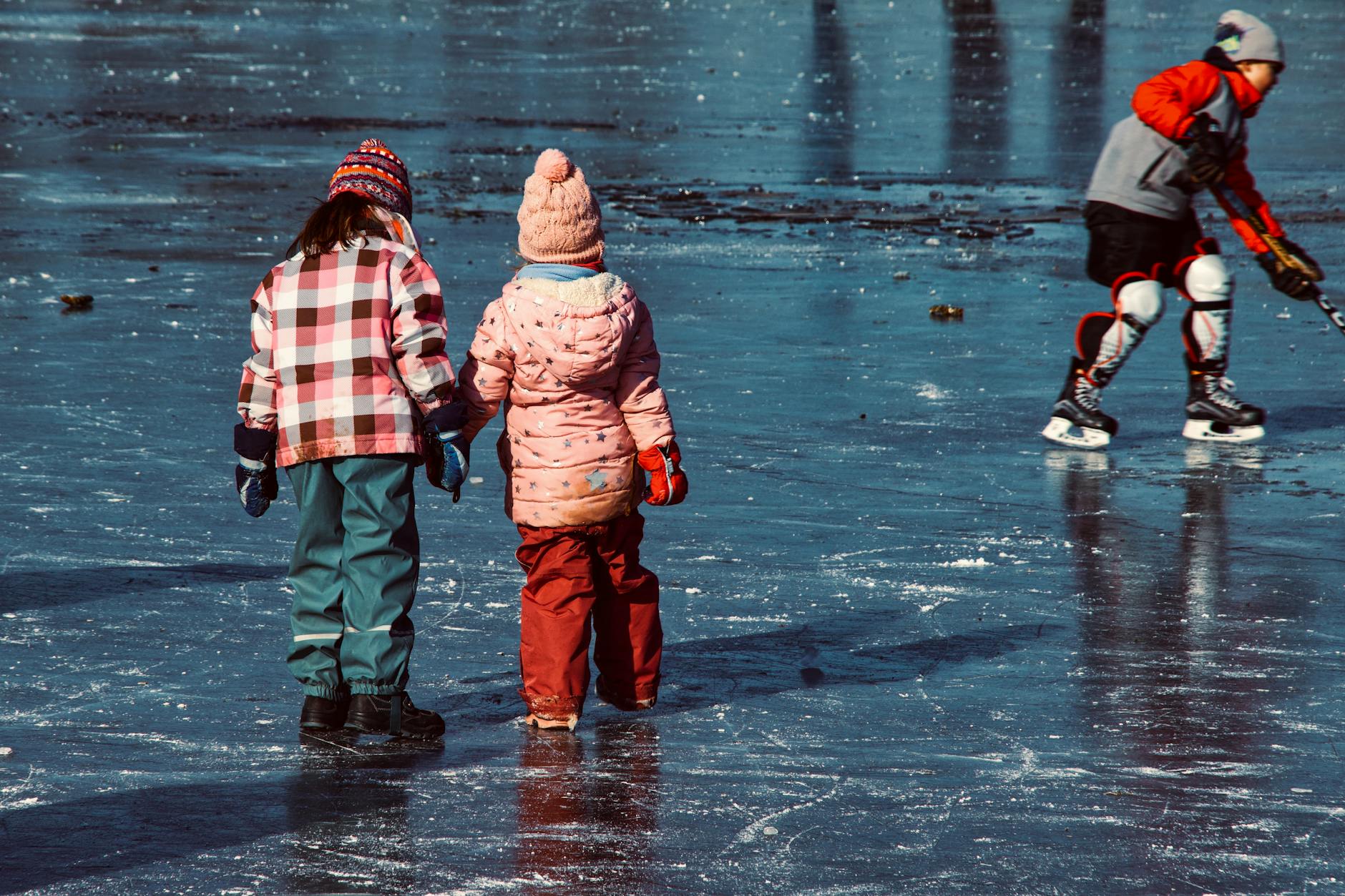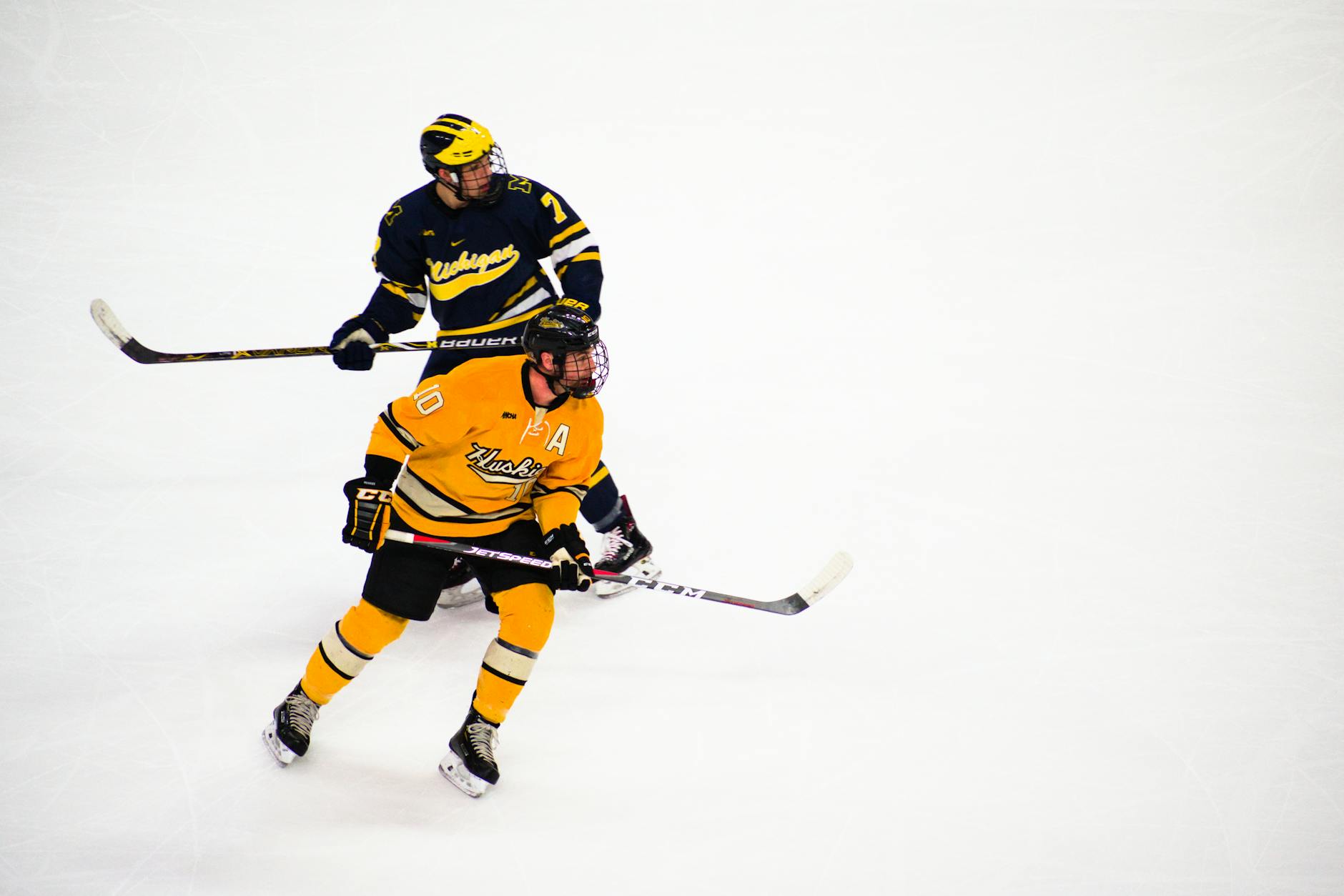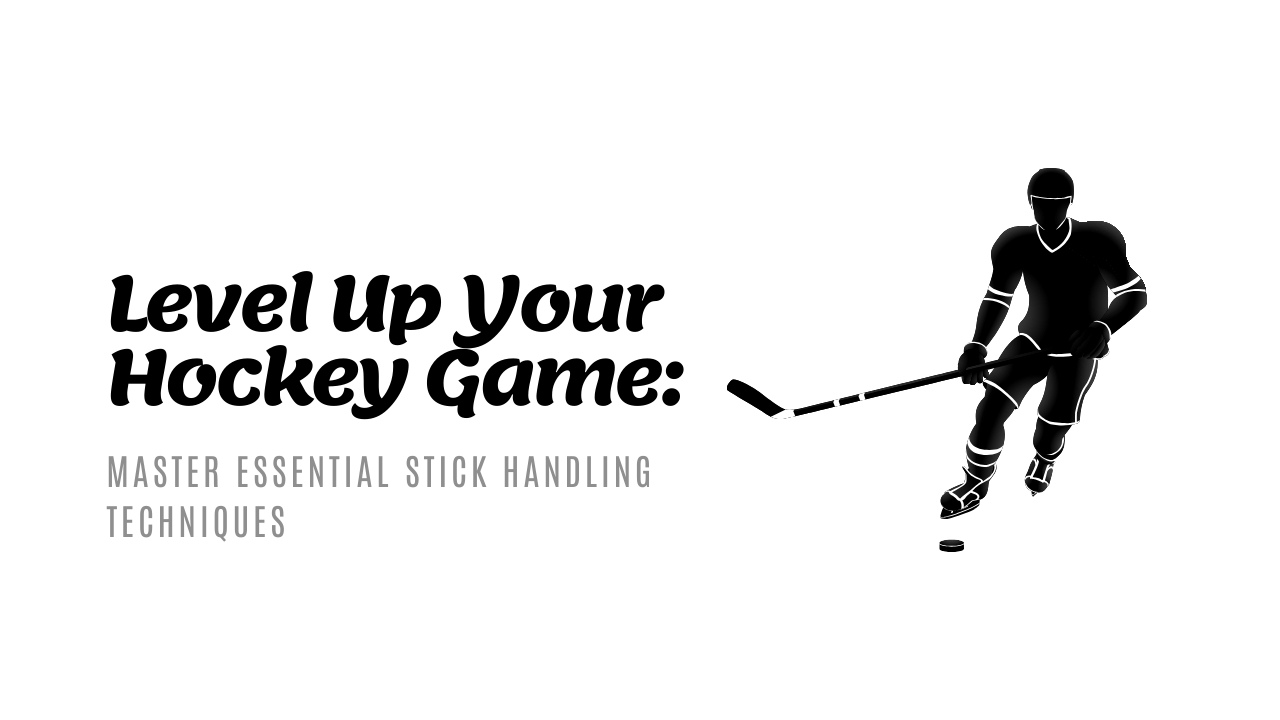Ever wondered how professional hockey players control the puck with such finesse? Stick handling is a vital skill that can drastically elevate your game. This blog post will cover essential techniques and drills, helping you master the art of stick handling both on and off the ice.
By the end, you’ll understand how to keep the puck close, maneuver around opponents, and improve your overall control. Ready to enhance your stick handling skills? Let’s dive in!
Importance of Stick Handling in Hockey
Mastering stick handling in hockey is a crucial skill that can significantly elevate your game on the ice. It plays a fundamental role in enhancing various aspects of your performance, providing you with a competitive edge over opponents.
Enhanced Puck Control
Stick handling is essential for improving control over the puck during plays. By honing your stick handling techniques, you can maneuver the puck with precision and finesse, allowing you to navigate through defense and create scoring opportunities for your team. The ability to maintain possession of the puck under pressure is a key element in outplaying opponents and dictating the flow of the game.
Deception and Fakes
One of the primary benefits of mastering stick handling is the art of deception and fakes it enables. By skillfully maneuvering the puck with your stick, you can deceive opponents, leaving them unsure of your next move. This element of surprise can lead to openings in the defense, presenting you with scoring chances and unsettling the opposing team’s strategy.
A combination of quick hands and deceptive puck movements can make you a formidable offensive threat on the ice.
Speed and Agility
Proficient stick handling not only enhances your control over the puck but also contributes to your speed and agility on the ice. By seamlessly guiding the puck with swift and precise movements, you can accelerate quickly, change directions with agility, and evade defenders effectively. The fluidity and dexterity in your stick handling play a vital role in your overall mobility and the ability to outmaneuver opponents during fast-paced gameplay.
Sharpening your stick handling skills can significantly boost your on-ice performance, making you a more dynamic and agile player.
Photo by Ron Lach
For more information on stick handling techniques in hockey, check out Hockey Canada’s guide.
Key Stick Handling Techniques
Mastering stick handling techniques is crucial for hockey players looking to enhance their game. It involves a combination of skill, speed, and precision to outmaneuver opponents on the ice. Here are key techniques to level up your stick handling game:
Puck Control
Maintaining control over the puck is fundamental in hockey. Proper hand positioning and movements play a significant role in effective stick handling. Your top hand should be placed higher on the stick for better control, while the bottom hand guides the stick’s movement. Flexibility in your wrists allows for quick adjustments and smooth puck manipulation. Practice shifting the puck from side to side while keeping close control to outsmart defenders.
Deking and Dribbling
Advanced stick handling techniques like deking (deception) and dribbling add finesse to your game. Deking involves quick shifts in the puck’s direction to deceive opponents and create scoring opportunities. Dribbling focuses on maintaining close control of the puck while moving swiftly across the ice. Incorporating deceptive moves like fakes and quick changes in direction can help you evade defenders and create scoring chances.
 Photo by Ron Lach
Photo by Ron Lach
Quick Hands Drills
Improving hand speed and coordination is key to becoming a proficient stick handler. Quick hands drills are essential to enhance your reflexes and control on the ice. Incorporate drills like rapid puck taps between cones, figure-eight puck control exercises, and quick stickhandling in tight spaces. These drills focus on developing muscle memory and agility, leading to faster reaction times during gameplay. Practice regularly to sharpen your hand-eye coordination and overall stick handling skills.
By honing your puck control, mastering deking and dribbling techniques, and engaging in quick hands drills, you can elevate your stick handling abilities and become a formidable force on the hockey rink. Consistent practice and dedication are key to refining these techniques and enhancing your performance on the ice.
Practice Tips for Stick Handling Improvement
Enhancing your stick handling skills is crucial for becoming a proficient hockey player. By incorporating off-ice drills and an on-ice training regimen into your practice routine, you can level up your game significantly.
Off-Ice Drills
Off-ice drills are essential for honing stick handling skills away from the rink, allowing you to focus on technique and precision. Here are some recommended off-ice drills to improve your stick handling:
- Dribbling with a Golf Ball: Practicing dribbling a golf ball with your hockey stick can enhance your control and coordination.
- Stickhandling in Tight Spaces: Set up obstacles like cones or small hurdles and practice stickhandling around them to improve your maneuverability.
- Reaction Time Training: Use a reaction ball to improve your reflexes and hand-eye coordination, which are essential for quick stick handling movements.
 Photo by Susanne Jutzeler
Photo by Susanne Jutzeler
On-Ice Training Regimen
An effective on-ice training regimen is vital for translating off-ice skills into game situations. Here’s an outline of a structured on-ice training routine to enhance your stick handling abilities during practice sessions:
- Warm-Up: Start with a dynamic warm-up to prepare your muscles for the session. Include light skating, stretching, and stickhandling exercises.
- Stickhandling Drills: Dedicate specific time to various stickhandling drills such as figure eights, toe-drags, and quick hands drills to improve your puck control.
- Game-Like Scenarios: Incorporate game-like situations into your training, such as 1-on-1 battles or stickhandling through cones to simulate in-game challenges.
- Feedback and Analysis: Seek feedback from coaches or teammates to identify areas of improvement and refine your technique for better results.
By integrating these off-ice drills and on-ice training routines into your practice schedule consistently, you can elevate your stick handling skills and elevate your performance on the ice.
Common Mistakes to Avoid
Improving your stick handling technique is vital for any hockey player looking to elevate their game. However, certain common mistakes can hinder your progress and impact your performance on the ice. By being aware of these pitfalls and knowing how to avoid them, you can refine your skills and become a more formidable player.
Overhandling the Puck
Overhandling the puck refers to excessive puck manipulation that can slow down your movements, reduce your decision-making time, and make you more predictable to opponents. Remember, simplicity is key in stick handling. Focus on quick, efficient movements to maintain control while keeping your eyes up to survey the ice.
 Photo by Lynda Sanchez
Photo by Lynda Sanchez
Lack of Proper Hand Positioning
Proper hand positioning is crucial for effective stick handling. Your top hand should lead the movement, providing guidance and control, while your bottom hand supports and stabilizes the stick. Ensure that your hands are positioned correctly on the stick to maximize dexterity and maneuverability.
Ignoring Peripheral Vision
Ignoring your peripheral vision while stick handling can leave you vulnerable to turnovers and missed opportunities on the ice. Stay aware of your surroundings, constantly scanning for open teammates, opponents closing in, and passing lanes opening up. Developing good peripheral vision will enhance your playmaking abilities and make you a more dynamic player.
For more stick handling techniques and tips, you can explore resources like Mastering Stick Handling Techniques in Hockey and 7 Keys To Stick Handling Mastery. Watching instructional videos like Follow These Steps to Learn How to Stick Handle and How To Stickhandle – the PROPER way! can also provide valuable insights into honing your stick handling skills.
Remember, mastering stick handling is a continuous process that requires practice, patience, and a keen eye for improvement. Keep refining your technique, incorporate feedback, and stay committed to enhancing your skills on the ice.
Mastering Stick Handling Drills
Improving your stick handling skills is crucial for any hockey player looking to enhance their performance on the ice. By mastering stick handling drills, you can develop better control, agility, and precision in handling the puck. Let’s dive into two effective drills that can take your stick handling abilities to the next level.
Solo Stick Handling Drill
One of the fundamental ways to improve your stick handling skills is by practicing a solo drill that focuses on control and coordination. Here’s a step-by-step guide to help you refine your technique:
- Begin by standing in a comfortable position with your knees slightly bent and your head up.
- Start moving the puck from side to side in front of your body using quick and short movements.
- Focus on keeping your eyes up and maintaining peripheral vision to simulate in-game situations.
- Increase the speed and complexity of your movements as you become more comfortable with the basic drill.
- Challenge yourself by incorporating crossovers, quick stops, or changes in direction to mimic real-game scenarios.
Remember, consistency is key. Practicing this solo stick handling drill regularly will help you build muscle memory and improve your overall stick handling proficiency.
Stick Handling Through Obstacles
To simulate real-game scenarios and enhance your stick handling skills under pressure, incorporating obstacles into your drills can be highly beneficial. Here’s a recommended drill to step up your stick handling game:
- Set up a series of obstacles such as cones, pucks, or sticks in a zigzag pattern on the ice.
- Start at one end of the course and navigate through the obstacles while maintaining control of the puck.
- Focus on quick decision-making, agility, and maintaining possession of the puck as you maneuver through the obstacles.
- Vary the difficulty of the drill by adjusting the spacing between obstacles or introducing moving obstacles for a more challenging experience.
- Work on keeping your head up, staying low to the ice, and using quick and precise movements to navigate through the course efficiently.
By practicing stick handling drills that involve obstacles, you can improve your puck control, agility, and decision-making skills, leading to better performance during actual gameplay.
Enhancing your stick handling proficiency through dedicated practice and targeted drills will not only boost your confidence on the ice but also elevate your overall gameplay. Keep challenging yourself with these drills to continually hone your skills and become a more adept hockey player.
 Photo by Susanne Jutzeler, suju-foto
Photo by Susanne Jutzeler, suju-foto
Conclusion
You’ve now explored various stick handling techniques that can elevate your performance on the field. Practicing dribbling, quick hand movements, fakes, and dekes is crucial to outmaneuvering your opponents and maintaining possession of the ball. Remember, mastering these skills takes time and dedication. Keep honing your stick handling abilities to become a formidable force in the game.
So, go ahead and hit the field with a newfound confidence in your stick handling prowess. Embrace the challenge, stay determined, and watch your skills flourish. Whether you’re a beginner or a seasoned player, continuous practice and refinement of your techniques will set you apart on the hockey turf.
Now, it’s time to grab your stick, step onto the field, and showcase your improved stick handling prowess. Remember, practice makes perfect, so keep refining your techniques and embracing new challenges to reach greater heights in your hockey journey.
Photo by Kuiyibo Campos

